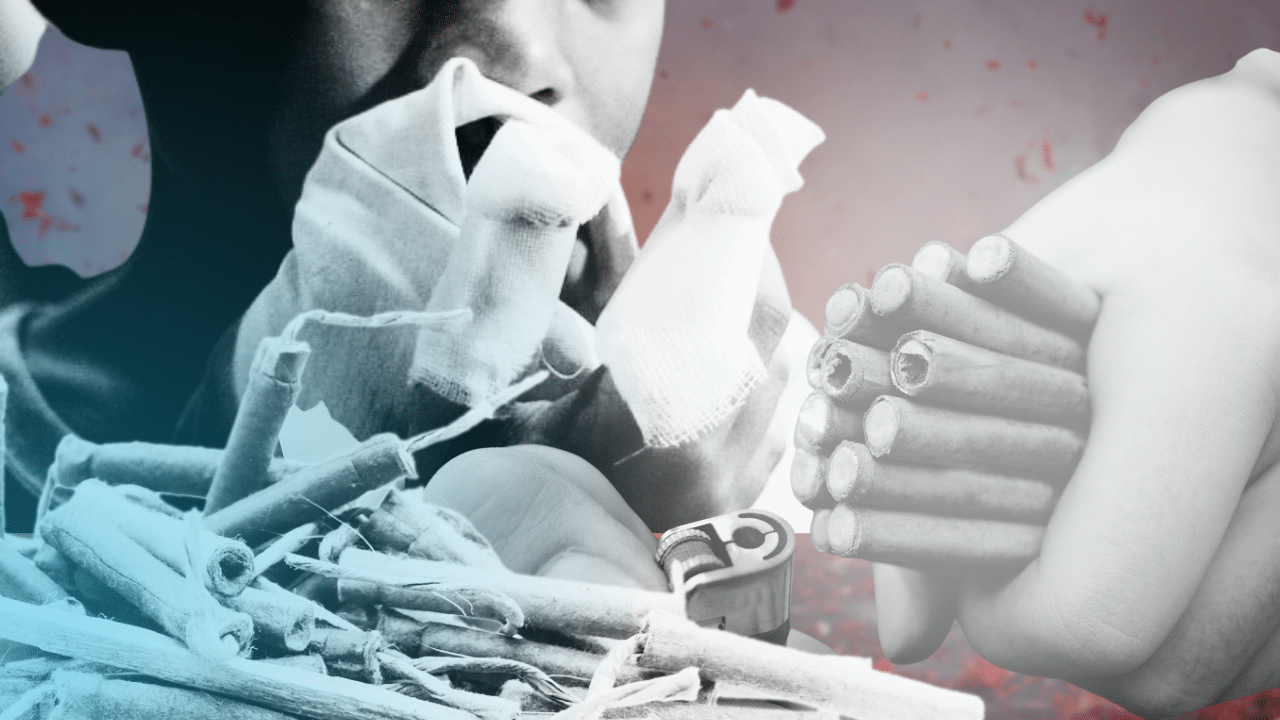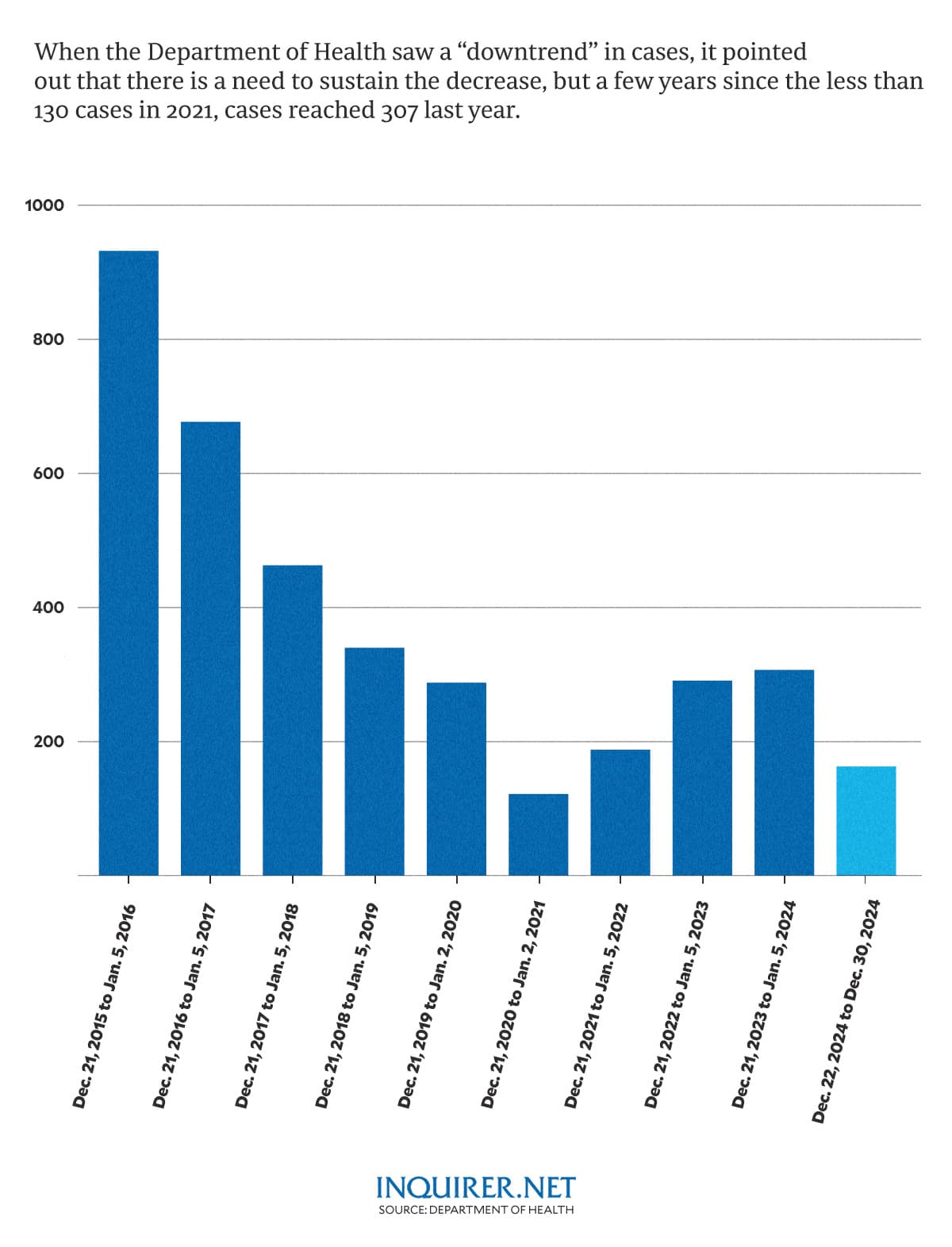MANILA, Philippines—While most Filipinos end the celebration of New Year’s Day with bliss, some don’t, especially those who end up in hospitals with second or third degree burns, blown off limbs, or severed fingers.
The use of firecrackers, especially at 12 a.m. on the first day of the year, is believed to ward off misfortunes, but again and again, they can be dangerous, with risks that can be serious or even downright deadly.
The Department of Health (DOH) saw a downtrend in cases of firecracker-related injuries a few years ago, with only 122 cases from Dec. 21, 2020 to Jan. 2, 2021, but as COVID-19 restrictions eased, cases are swelling again.
Based on data from the DOH, cases of firecracker-related injuries grew to 188 on Dec. 21, 2021 to Jan. 5, 2022; 291 on Dec. 21, 2022 to Jan. 5, 2023; and 307 on Dec. 21, 2023 to Jan. 5, 2024.
READ: Fireworks-related injuries post 50% increase, says DOH
This year, 163 cases have already been reported from Dec. 22 to Dec. 30.
READ: DOH: Firecracker-related injuries rise to 163
As pointed out by the American Society for Surgery of the Hand, the devastation that firecrackers can cause is serious and alarming as it can lead to burns, which may result in excessive scarring.
Cases related to the use of firecrackers can lead to loss of a finger as well as amputation of the hand or legs, and surgery. The smoke from firecrackers can also be dangerous to the lungs.
Regulated
In 2017, Rodrigo Duterte, who was then the president, signed Executive Order 28, a directive that limited the use of firecrackers to community zones and prohibited certain types of firecrackers.
Based on a list released by the Civil Security Group (CSG) of the Philippine National Police, firecrackers such as 5-star, piccolo, boga, watusi, pla-pla, giant bawang, and giant whistle bomb are prohibited.
The CSG said that all overweight and oversized firecrackers, or those that have more than 0.2 grams or more than ⅓ teaspoon of explosive content, and firecrackers that fuse burns in less than three seconds or more than six seconds are illegal.
READ: PPA reminds passengers not to bring firecrackers while traveling
Likewise, those with a mixture of phosphorus and/or sulfur with that of chlorates are prohibited, pointing out that the public should only purchase and use certified firecrackers from registered retailers and dealers.
Republic Act 7183, which was signed into law in 1992, regulated the sale, distribution, manufacture, and use of firecrackers in the Philippines to “promote public safety, order, and national security.”
No legal, illegal
But as previously stressed by Health Assistant Secretary Albert Domingo to ABS-CBN, all firecrackers, whether prohibited or not, can be dangerous, explaining that once they explode, the damage that illegal and legal firecrackers could cause is the same.
Back in 2020, too, the DOH pointed out that some injuries were attributed to legally sold fireworks. “We have to do something about it […] It’s a bit oxymoronic to say that it is legal but it is injurious,” it said.
As stated in the Fireworks-Related Injury Surveillance in the Philippines that was published by the World Health Organization, lighting illegal firecrackers accounted for 50.2 percent of injuries in 2010, 2011, 2012, 2013, and 2014.
READ: Two arrested for selling P60,000 worth illegal firecrackers online
It said that the most common injury areas were the hands (44 percent), legs (21 percent), and eyes (14 percent), pointing out that males were more commonly wounded than females at 80 percent.
Illegal fireworks were related to all of the four deaths that were documented.



